"Archimedes' Principle" Buoyancy PPT Courseware 5 Simple campus recruitment activity planning plan summary enterprise and institution recruitment publicity lecture PPT template is a general PPT template for business post competition provided by the manuscript PPT, simple campus recruitment activity planning plan summary enterprise and institution recruitment promotion Lecture PPT template, you can edit and modify the text and pictures in the source file by downloading the source file. If you want more exquisite business PPT templates, you can come to grid resource. Doug resource PPT, massive PPT template slide material download, we only make high-quality PPT templates!
| 文件名 如何下载使用 | 下载次数 | Download Points | 下载地址 |
|---|---|---|---|
| "Archimedes' Principle"... | 11875次 | 0.00 | Free Download |
Tips: If you open the template and feel that it is not suitable for all your needs, you can search for related content "Archimedes' Principle" Buoyancy PPT Courseware 5 is enough.
How to use the Windows system template
Directly decompress the file and use it with office or wps
How to use the Mac system template
Directly decompress the file and use it Office or wps can be used
Related reading
For more detailed PPT-related tutorials and font tutorials, you can view: Click to see
How to create a high-quality technological sense PPT? 4 ways to share the bottom of the box
Notice
Do not download in WeChat, Zhihu, QQ, built-in browsers, please use mobile browsers to download! If you are a mobile phone user, please download it on your computer!
1. The manuscript PPT is only for study and reference, please delete it 24 hours after downloading.
2. If the resource involves your legitimate rights and interests, delete it immediately.
3. Contact information: service@daogebangong.com
"Archimedes' Principle" Buoyancy PPT Courseware 5, due to usage restrictions, it is only for personal study and reference use. For commercial use, please go to the relevant official website for authorization.
(Personal non-commercial use refers to the use of this font to complete the display of personal works, including but not limited to the design of personal papers, resumes, etc.)
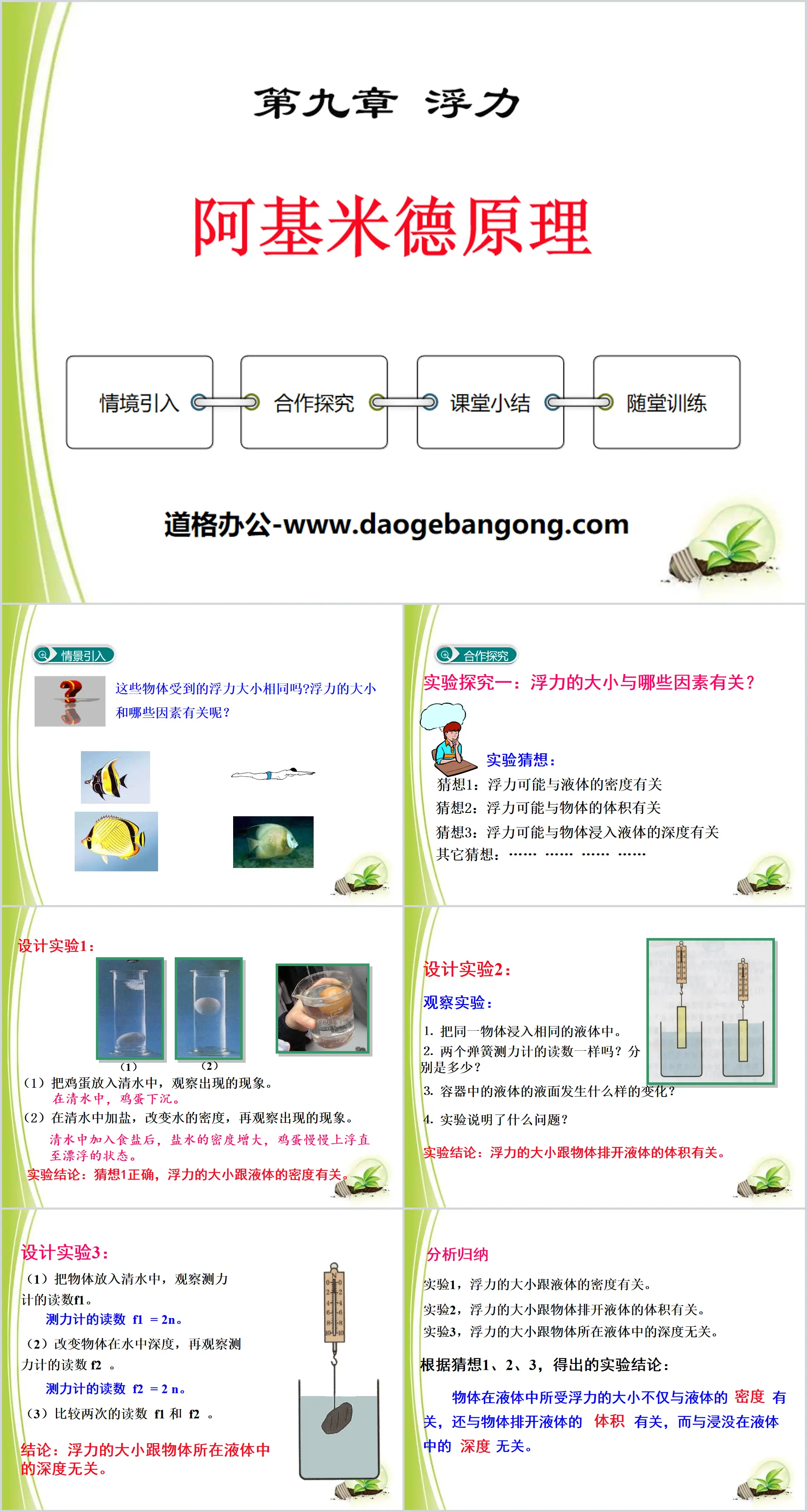
Related reading
For more detailed PPT-related tutorials and font tutorials, you can view:Please click to see


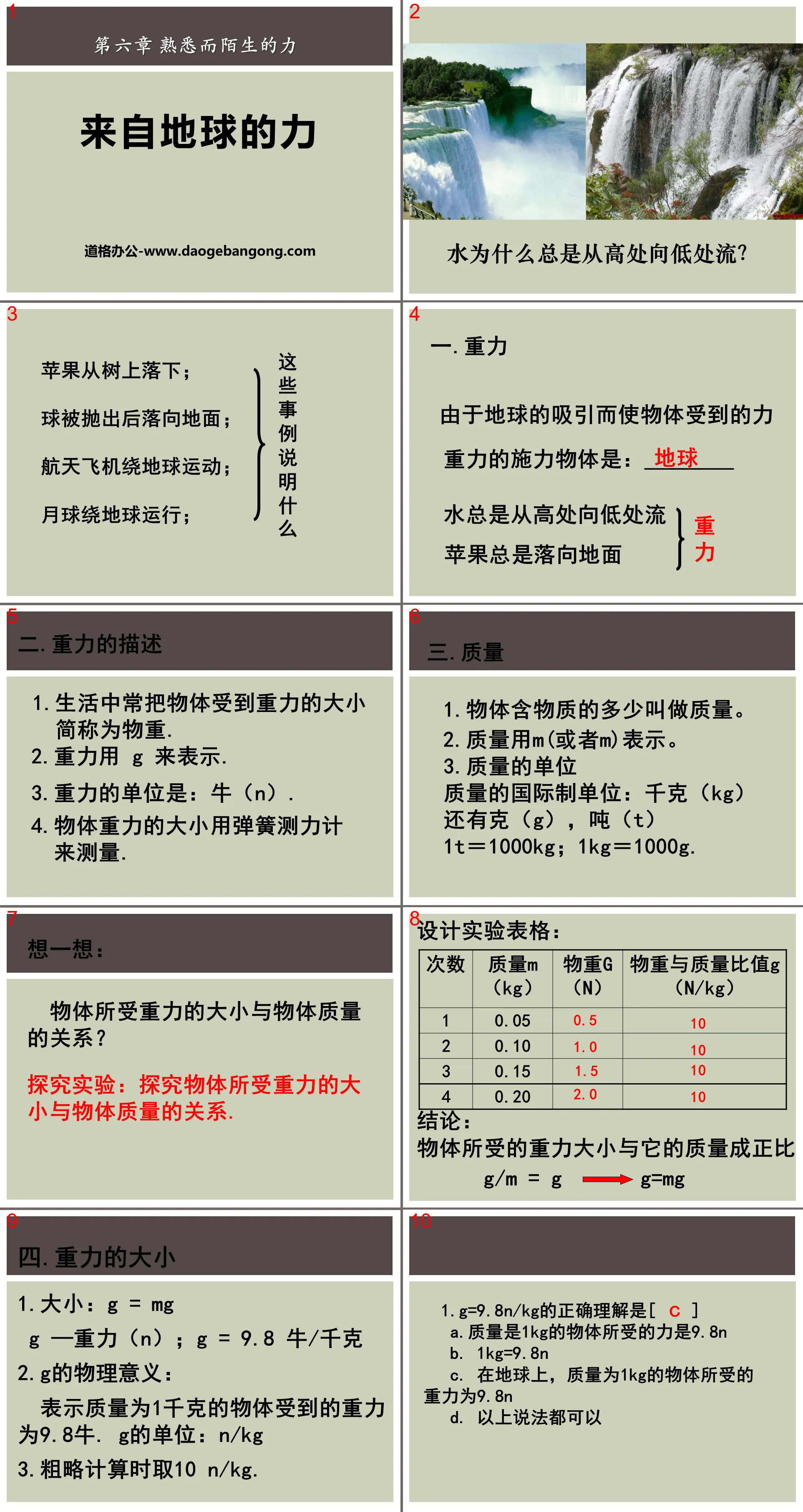
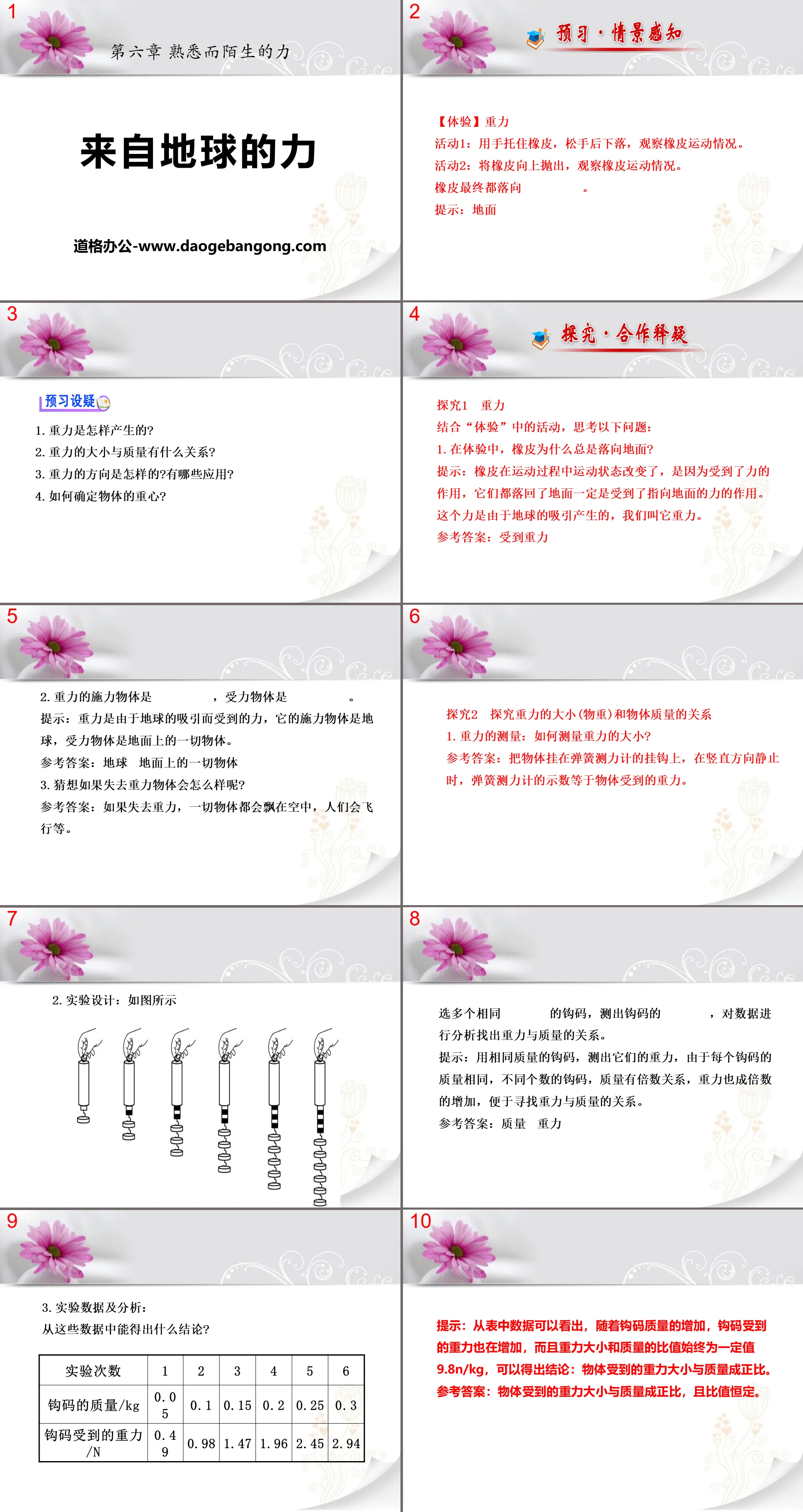
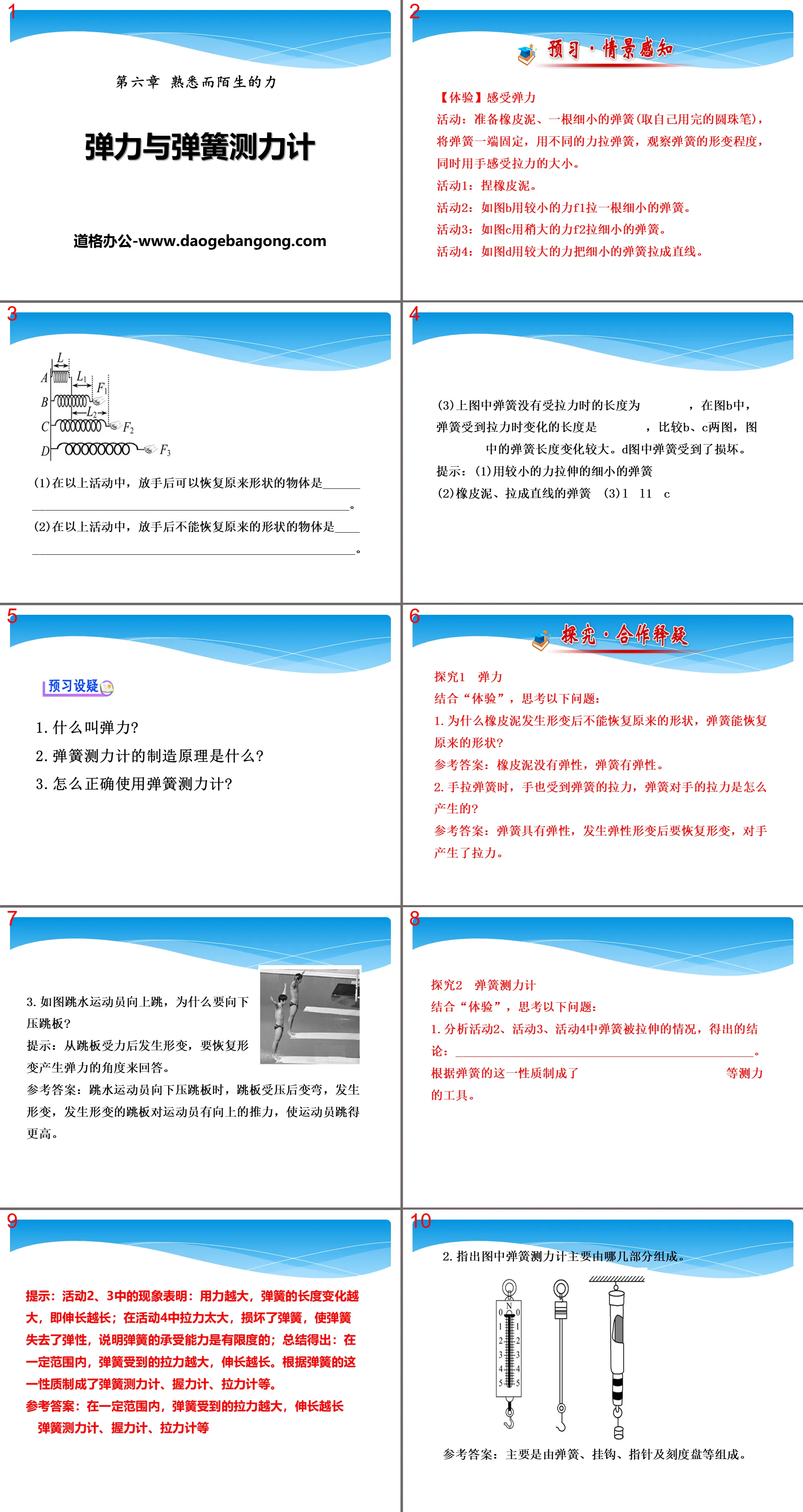
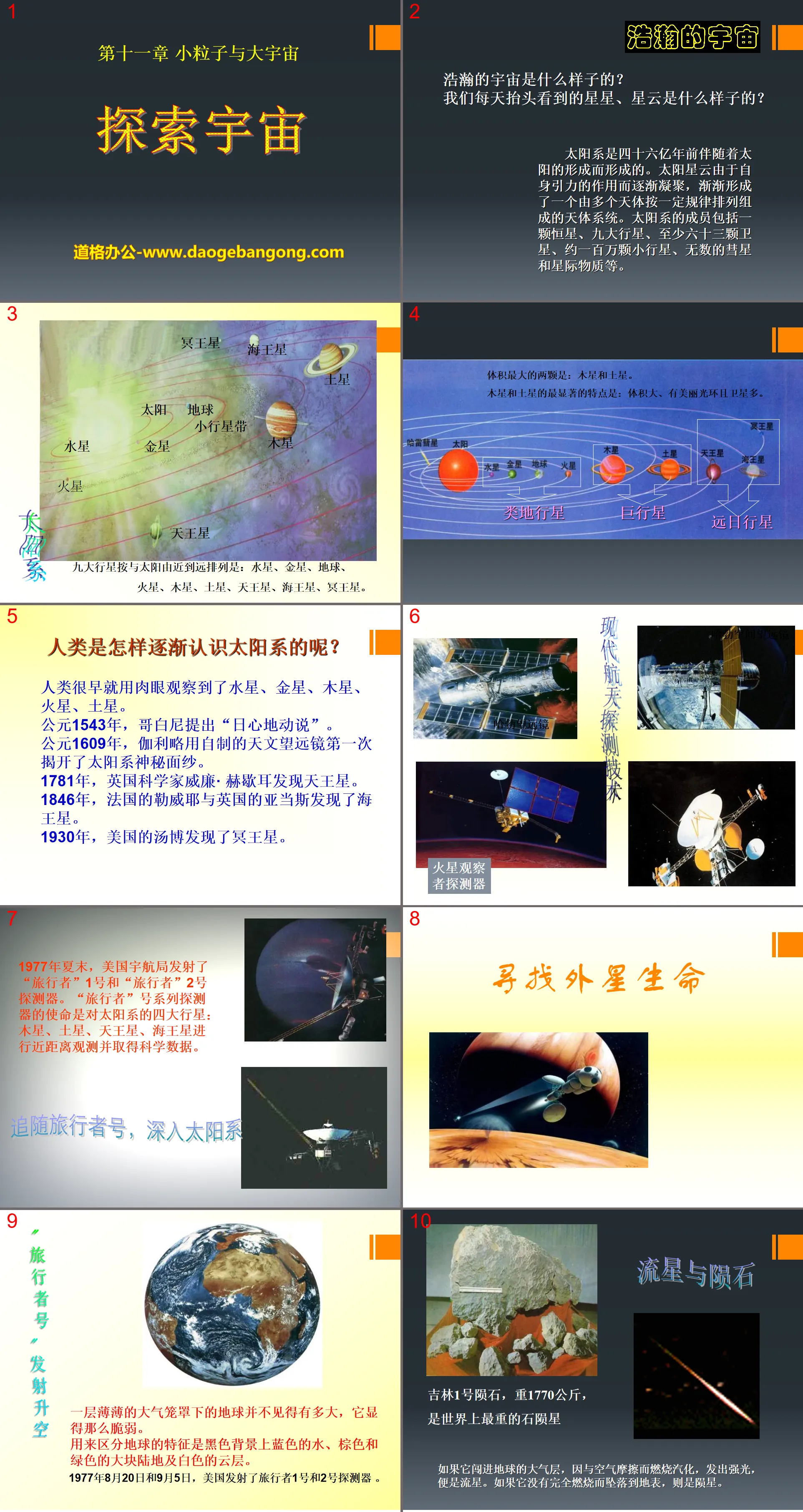
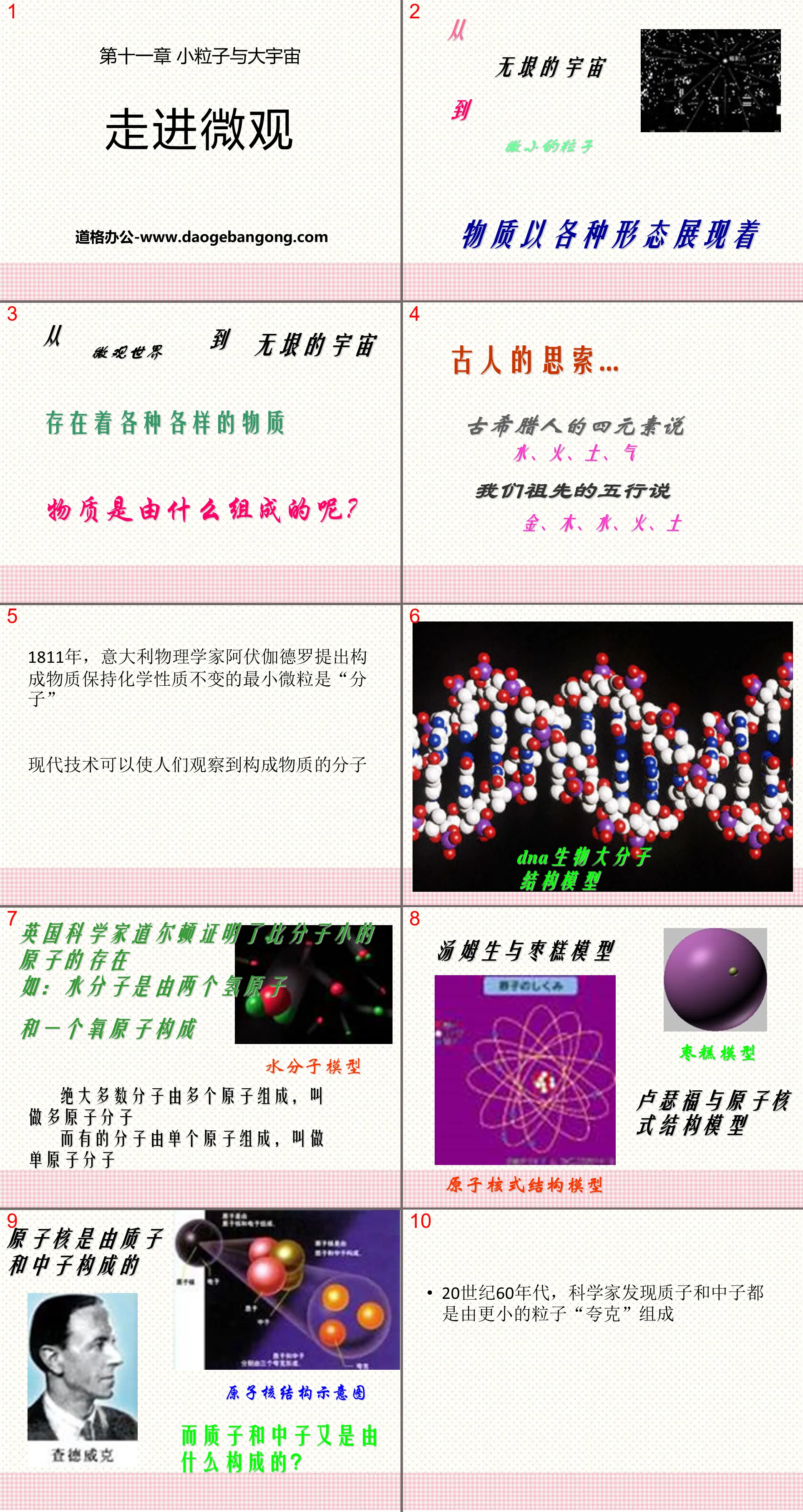
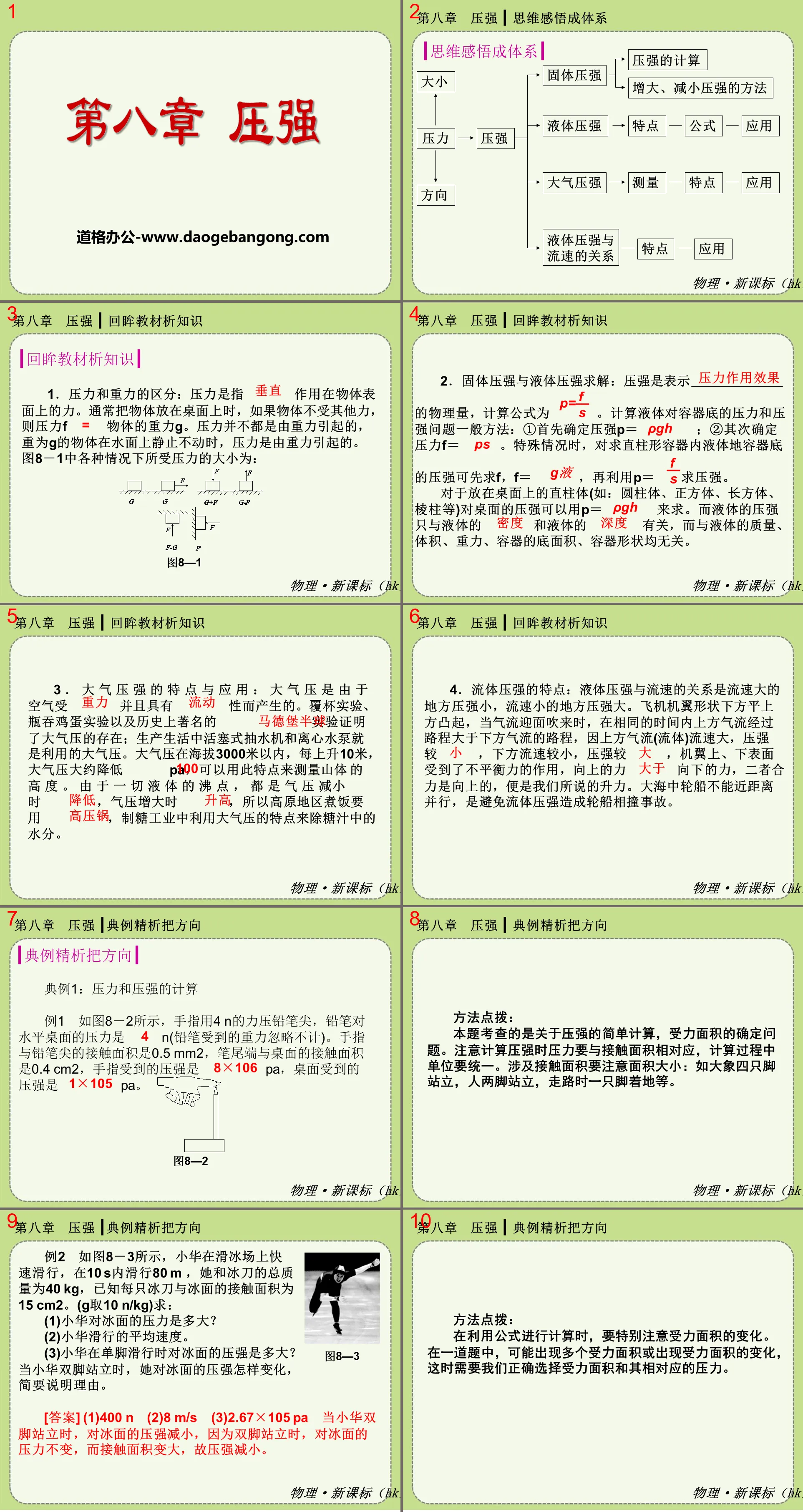
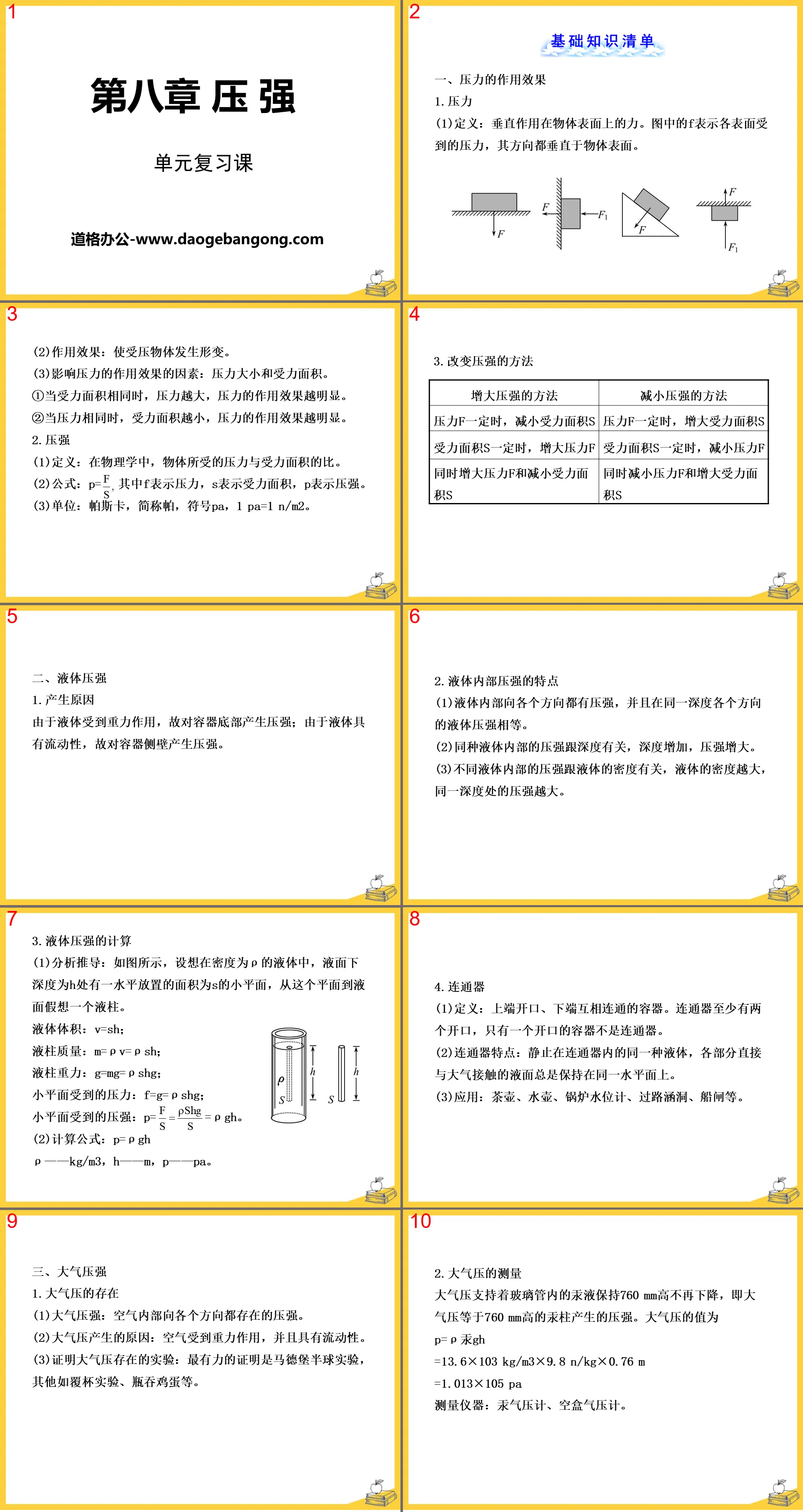
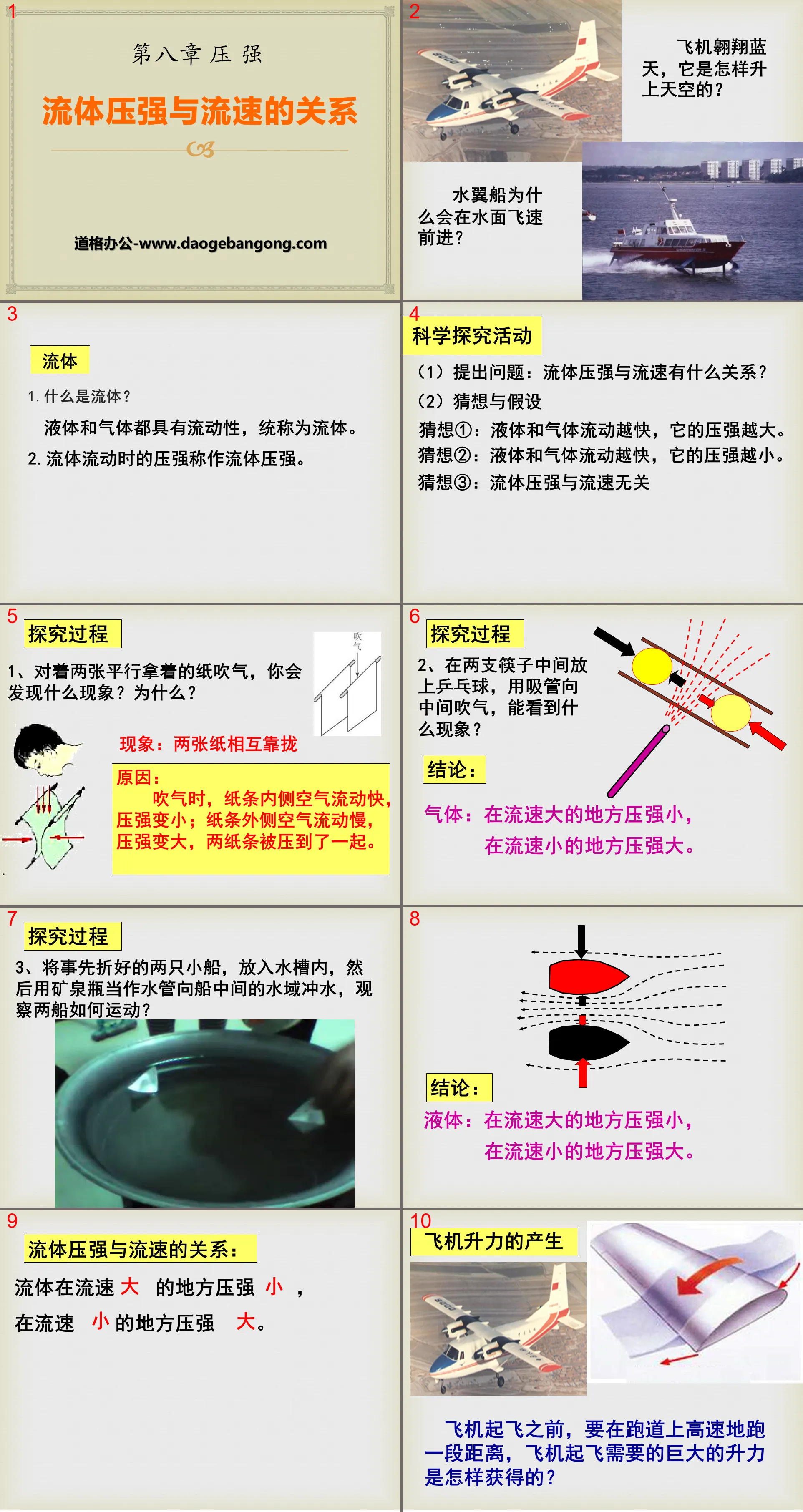
Authoritative PPT Summary
"Archimedes' Principle" Buoyancy PPT Courseware 5
Scenario introduction
Do these objects experience the same buoyant force? What factors are related to the buoyant force?
collaborative inquiry
Experiment 1: What factors are related to the size of buoyancy?
Experimental conjecture:
Conjecture 1: Buoyancy may be related to the density of the liquid
Conjecture 2: Buoyancy may be related to the volume of the object
Conjecture 3: Buoyancy may be related to the depth of the object immersed in the liquid
Design experiment 1:
(1) Put the eggs into clean water and observe what happens.
In clear water, eggs sink.
(2) Add salt to clear water, change the density of the water, and observe the phenomenon that occurs.
After adding salt to the clear water, the density of the salt water increases, and the egg slowly floats up until it floats.
Experimental conclusion: Conjecture 1 is correct. The buoyancy force is related to the density of the liquid.
Design experiment 2:
Observation experiment:
⒈ Immerse the same object in the same liquid.
⒉ Are the readings of the two spring dynamometers the same? What are the differences?
⒊ What changes occur to the liquid level in the container?
⒋What did the experiment illustrate?
Experimental conclusion: The size of the buoyancy force is related to the volume of liquid displaced by the object.
Design experiment 3:
(1) Put the object into clean water and observe the reading F1 of the force gauge.
The force gauge reads F1 = 2N.
(2) Change the depth of the object in the water, and then observe the reading F2 of the force gauge.
The dynamometer reads F2 = 2 N.
(3) Compare the two readings F1 and F2.
Conclusion: The size of the buoyancy force has nothing to do with the depth of the object in the liquid.
Class summary
1. Factors affecting the size of buoyancy:
The buoyancy force experienced by an object in a liquid is not only related to the density of the liquid, but also related to the volume of the liquid displaced by the object, and has nothing to do with the depth of immersion in the liquid.
2. Archimedes’ principle:
The buoyant force on an object immersed in a liquid is equal to the gravitational force on the liquid displaced by the object.
Formula: F float = G row = ρ liquid g V row
In-class training
1. How does the buoyancy force on a table tennis ball change when it rises from the water to the surface?
2. Among the following statements about buoyancy, which one is correct ( )
A. The deeper an object is immersed in a liquid, the greater the buoyant force it experiences.
B. The larger the volume of the object, the greater the buoyancy force it will experience.
C. The smaller the gravity an object experiences, the greater the buoyant force it experiences.
D. The greater the gravity of the object displacing liquid, the greater the buoyancy force it receives.
3. Use a spring balance to weigh an iron block in the air. It weighs 20 N. When part of the iron block is immersed in water, the spring scale reads 16 N. At this time, the buoyant force on the iron block is _____N. If The iron block is completely immersed in water. The buoyant force on the iron block is 6 N. At this time, the reading of the spring balance is _____ N.
4. An object is hung on a spring dynamometer and its weight is 90N. When the object is immersed in water, the reading of the spring dynamometer is 50N. The buoyancy force experienced by the object when immersed in water is _____N; if When half the volume of the object is above the water, the buoyant force it experiences is ______N, and the reading of the spring dynamometer is: _____N.
Keywords: buoyancy teaching courseware, Archimedes Principle teaching courseware, Shanghai Science Edition eighth grade physics PPT courseware download, eighth grade physics slide courseware download, buoyancy PPT courseware download, Archimedes Principle PPT courseware download,. PPT format;
For more information about the PPT courseware "Archimedes' Principle of Buoyancy", please click the Buoyancy ppt Archimedes Principle ppt tag.
"Archimedes' Principle" Buoyancy and Lift PPT courseware:
"Archimedes' Principle" Buoyancy and Lift PPT courseware teaching objectives 1. Know Archimedes' Principle through experimental exploration; 2. Be able to use Archimedes' Principle to solve problems related to buoyancy. Teaching focus: Archimedes' Principle thinking activation A wooden block is placed on a level surface...
"Archimedes' Principle" Buoyancy PPT Courseware 8:
"Archimedes' Principle" Buoyancy PPT Courseware 8 1. Review 1: What is buoyancy? Design experiment: As shown in the figure, use a spring dynamometer, a block, a thin wire, a beaker, water and other equipment to compare the readings of the spring dynamometer when the block is in air and water. Steps: (1) In...
"Archimedes' Principle" Buoyancy PPT Courseware 7:
"Archimedes' Principle" Buoyancy PPT Courseware 7 Archimedes' Inspiration More than two thousand years ago, the Greek scholar Archimedes wanted to measure the volume of a gold crown in order to identify whether it was pure gold. He thought hard for a long time but failed. result. One day, he stepped into a bathtub filled with water...